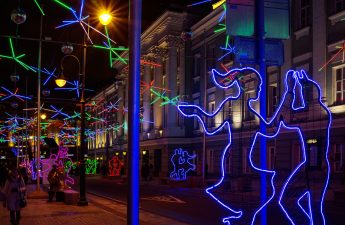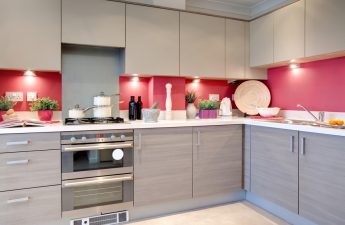What can modern lighting and what are the mainadvantages of one of the latest technical innovations in lighting design - LEDs? We talked to the experts and formed our opinion: it is behind this lighting that the future The last few years are marked by an ever-increasing spread of LEDs in any of their applications. Including in the design of interiors. Scientific research has changed the very approach to the issues of lighting space, both public and personal. And manufacturers have achieved that these developments have become even more accessible to millions of people. 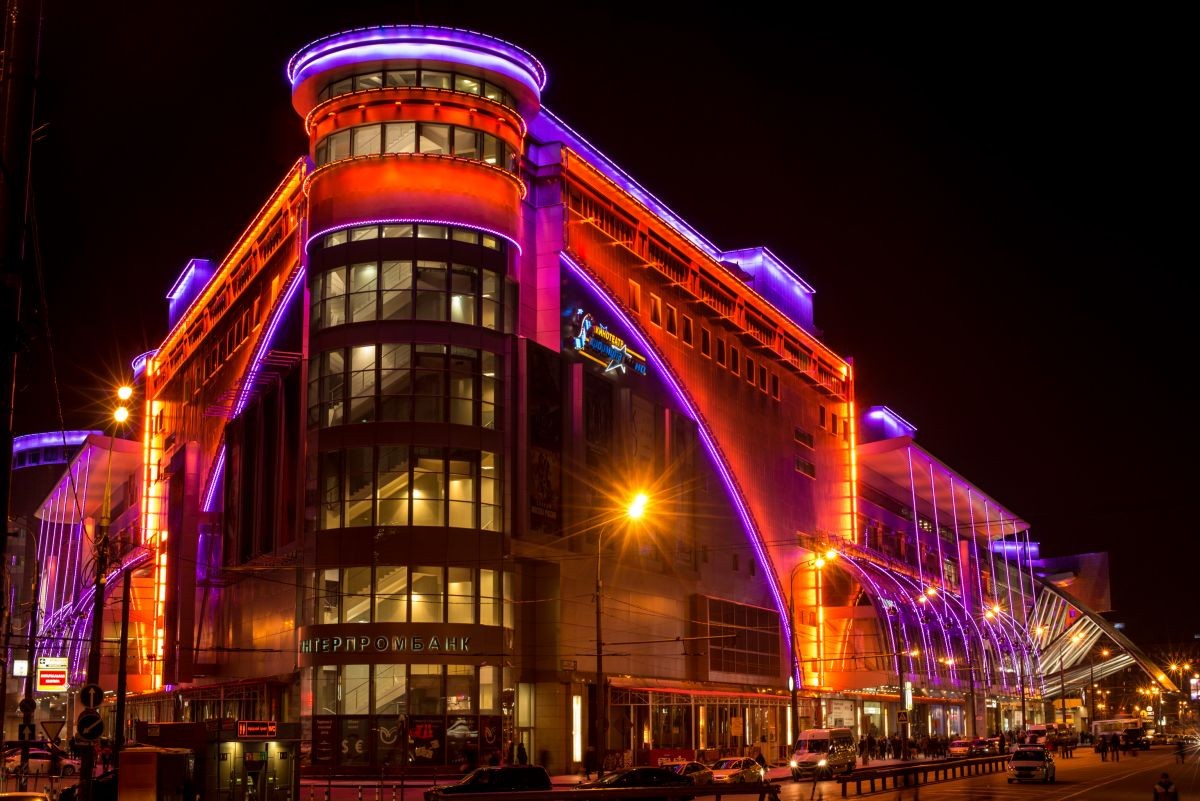 Facade of the shopping center "Evropeyskiy", Moscow.Project of architectural and artistic lighting, Based on Philips solutions "Lighting solutions". The author of the concept is Sergey Sizy. LEDs are a new generation of light sources. Used correctly as a lighting design tool, they help make space practical and multifunctional, while maintaining harmony and homeliness. But before talking about what modern lighting can do, you need to understand what has changed recently, because it's not just technology. And the lighting designer Sergey Sizy will help us figure it out. Sergey Sizyi Lighting designer, practicing since 2004. The author of the concept of "emotional design", according to which the era of functional lighting remained in the 20th century, and now the needs and technological capabilities allow creating an environment that will help people experience suitable emotions and change their mood. Founded by him in 2014, the first Russian lighting design school Lighting Design School (LiDS) gives a complete picture of the lighting designer profession, together with an extensive knowledge base, sufficient to carry out projects of any complexity in a wide variety of segments: from lighting residential and public interiors to facade and landscape lighting. Now Sergey conducts numerous lectures and master classes, and is also writing a book about lighting design and his theory of emotional design. http://www.lidschool.org/
Facade of the shopping center "Evropeyskiy", Moscow.Project of architectural and artistic lighting, Based on Philips solutions "Lighting solutions". The author of the concept is Sergey Sizy. LEDs are a new generation of light sources. Used correctly as a lighting design tool, they help make space practical and multifunctional, while maintaining harmony and homeliness. But before talking about what modern lighting can do, you need to understand what has changed recently, because it's not just technology. And the lighting designer Sergey Sizy will help us figure it out. Sergey Sizyi Lighting designer, practicing since 2004. The author of the concept of "emotional design", according to which the era of functional lighting remained in the 20th century, and now the needs and technological capabilities allow creating an environment that will help people experience suitable emotions and change their mood. Founded by him in 2014, the first Russian lighting design school Lighting Design School (LiDS) gives a complete picture of the lighting designer profession, together with an extensive knowledge base, sufficient to carry out projects of any complexity in a wide variety of segments: from lighting residential and public interiors to facade and landscape lighting. Now Sergey conducts numerous lectures and master classes, and is also writing a book about lighting design and his theory of emotional design. http://www.lidschool.org/  Lighting design project by Sergei Sizogo for the officecompany TP Vision, prize of the competition "Russian Lighting Design, 2013" Indeed, in recent years, there have been dramatic changes in the area of design that is directly related to lighting design. It is no coincidence that the UN declared 2015 the International Year of Light, and this initiative was supported by the Nobel Prize in Physics for the discovery of the blue LED, issued in 2014. Also, research is now underway in the field of the biological effects of light on humans and biorhythms, including the effect of spectral composition on its activity and productivity without harm to health. Sergey Sizy, lighting designer: - It is customary to say that there has been a certain technical progress, which is even called the LED revolution. A lot has changed technically, but the needs of users have also increased significantly. Including people's understanding of what good lighting is and what is its role in shaping space. sergeysizy.com
Lighting design project by Sergei Sizogo for the officecompany TP Vision, prize of the competition "Russian Lighting Design, 2013" Indeed, in recent years, there have been dramatic changes in the area of design that is directly related to lighting design. It is no coincidence that the UN declared 2015 the International Year of Light, and this initiative was supported by the Nobel Prize in Physics for the discovery of the blue LED, issued in 2014. Also, research is now underway in the field of the biological effects of light on humans and biorhythms, including the effect of spectral composition on its activity and productivity without harm to health. Sergey Sizy, lighting designer: - It is customary to say that there has been a certain technical progress, which is even called the LED revolution. A lot has changed technically, but the needs of users have also increased significantly. Including people's understanding of what good lighting is and what is its role in shaping space. sergeysizy.com  The history of lighting designthe task is to achieve functional lighting, which the person did. Artificial electric light sources appeared, which gave a stable bright light. For the most part, all approaches to how lighting was created and what was required of it were based on a single principle - the need to compensate for the lack of natural light in the room, to make a space uniformly illuminated with a certain level of illumination. This happened not only in street, office or industrial lighting, where safety and functionality are important, but also. Sergey Sizy, lighting designer: - We all grew up in such an environment and continue to face it today, when the space is a room uniformly illuminated, most often by one light source, which is located on the ceiling. Most of the conversations are about how much lux is required, what color temperature, warm or cold light, which lamp to choose, while no other task except functional is solved. And by the end of the 20th century, it was clear that a person had gone beyond the boundaries of such an understanding of the formation of space, needs had grown, so no one was satisfied with only functional interior lighting. sergeysizy.com
The history of lighting designthe task is to achieve functional lighting, which the person did. Artificial electric light sources appeared, which gave a stable bright light. For the most part, all approaches to how lighting was created and what was required of it were based on a single principle - the need to compensate for the lack of natural light in the room, to make a space uniformly illuminated with a certain level of illumination. This happened not only in street, office or industrial lighting, where safety and functionality are important, but also. Sergey Sizy, lighting designer: - We all grew up in such an environment and continue to face it today, when the space is a room uniformly illuminated, most often by one light source, which is located on the ceiling. Most of the conversations are about how much lux is required, what color temperature, warm or cold light, which lamp to choose, while no other task except functional is solved. And by the end of the 20th century, it was clear that a person had gone beyond the boundaries of such an understanding of the formation of space, needs had grown, so no one was satisfied with only functional interior lighting. sergeysizy.com 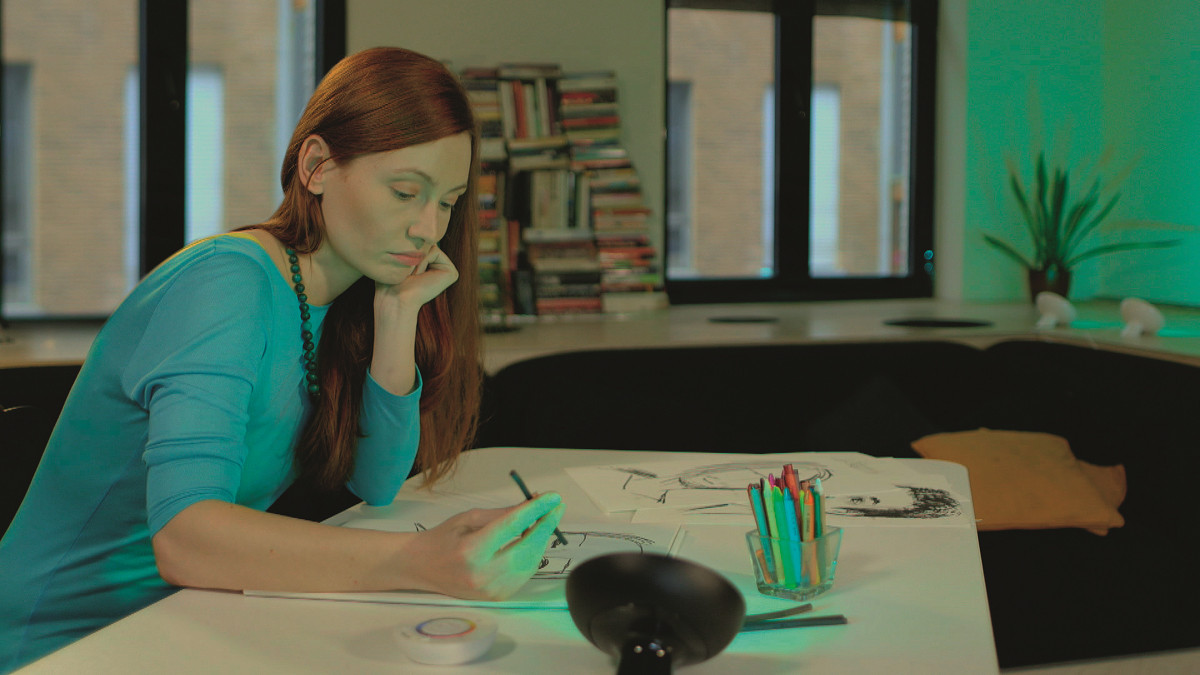 Philips LivingColors LED LightNeeds have changed, and people's understanding of what they want has changed. The usual interior is already not enough, I want the light not to complement, but to prevail, set some emotions and could dynamically change, changing the entire surrounding space. That is why a whole profession appeared - a lighting designer. New specialists strive to cover a large area of knowledge that lies at the intersection of many areas - both technical and design, and even psycho-emotional and physiological. Sergey Sizy, lighting designer: - Emotional lighting is realized due to two types of lighting: firstly, accentuating, when the room is unevenly lit and pronounced contrasts are used, creating a hierarchy of space perception, when it begins to be divided into objects of more and less important. In this regard, light is a very convenient tool, because earlier these tasks were solved in design with the help of shape and color. But these tools are not flexible, that is, if, relatively speaking, you painted a wall in a flashy red, then it will forever remain an accent, be it Sunday or Thursday, winter or autumn, for life, until you get bored too don't want to repaint it. And light gave people the opportunity to change these accents in space in a split second, and not only individual objects, but also entire zones. lidschool.org
Philips LivingColors LED LightNeeds have changed, and people's understanding of what they want has changed. The usual interior is already not enough, I want the light not to complement, but to prevail, set some emotions and could dynamically change, changing the entire surrounding space. That is why a whole profession appeared - a lighting designer. New specialists strive to cover a large area of knowledge that lies at the intersection of many areas - both technical and design, and even psycho-emotional and physiological. Sergey Sizy, lighting designer: - Emotional lighting is realized due to two types of lighting: firstly, accentuating, when the room is unevenly lit and pronounced contrasts are used, creating a hierarchy of space perception, when it begins to be divided into objects of more and less important. In this regard, light is a very convenient tool, because earlier these tasks were solved in design with the help of shape and color. But these tools are not flexible, that is, if, relatively speaking, you painted a wall in a flashy red, then it will forever remain an accent, be it Sunday or Thursday, winter or autumn, for life, until you get bored too don't want to repaint it. And light gave people the opportunity to change these accents in space in a split second, and not only individual objects, but also entire zones. lidschool.org 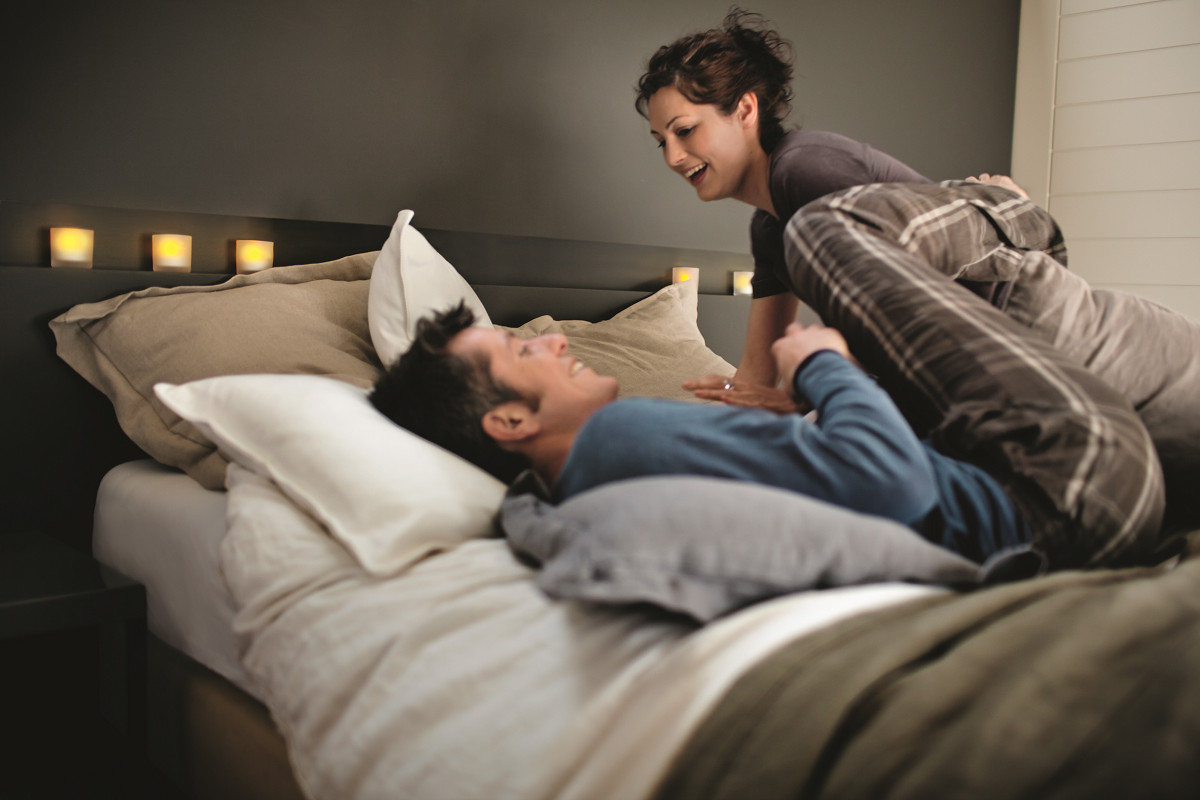 Philips LED Candles LEDs There is no denying thatthe fact that LEDs have become the most important factor that has led to such a significant change. The capabilities of LEDs allow you to integrate colored lighting into the interior. Innovative LED solutions often have dimming and color temperature control functions that allow you to “play” with the interior, adapt the lighting for different tasks, such as studying, relaxing or meeting guests. And more advanced users want a lamp that can be controlled from an iPhone. Natalia Neverskaya, Philips "Lighting solutions": - What to choose - functional or decorative lighting? It all depends on the creative idea of the designer and the purpose of the room. A functional type of lighting, often referred to as "everyday", is great if you want to free up or zone a space and add more light. Decorative lamps will be appropriate if they complement the interior design, as well as if there is a need to emphasize the status or taste preferences of the owner.
Philips LED Candles LEDs There is no denying thatthe fact that LEDs have become the most important factor that has led to such a significant change. The capabilities of LEDs allow you to integrate colored lighting into the interior. Innovative LED solutions often have dimming and color temperature control functions that allow you to “play” with the interior, adapt the lighting for different tasks, such as studying, relaxing or meeting guests. And more advanced users want a lamp that can be controlled from an iPhone. Natalia Neverskaya, Philips "Lighting solutions": - What to choose - functional or decorative lighting? It all depends on the creative idea of the designer and the purpose of the room. A functional type of lighting, often referred to as "everyday", is great if you want to free up or zone a space and add more light. Decorative lamps will be appropriate if they complement the interior design, as well as if there is a need to emphasize the status or taste preferences of the owner.  Philips decorative lighting solutionsAdvantages of LEDs Like any other novelties applied to the interior and not only, LEDs have a lot of positive characteristics, taking into account which you can build a unique lighting system that can change the entire surrounding space in a split second. The possibilities are truly endless. 1. Cost-effectiveness The main advantage of LEDs is cost-effectiveness, because electricity consumption is much lower than that of conventional luminaires with the same output. Energy efficiency can reach 90% compared to incandescent lamps, which is especially important in our country, where housing and communal services rates are increasing annually.
Philips decorative lighting solutionsAdvantages of LEDs Like any other novelties applied to the interior and not only, LEDs have a lot of positive characteristics, taking into account which you can build a unique lighting system that can change the entire surrounding space in a split second. The possibilities are truly endless. 1. Cost-effectiveness The main advantage of LEDs is cost-effectiveness, because electricity consumption is much lower than that of conventional luminaires with the same output. Energy efficiency can reach 90% compared to incandescent lamps, which is especially important in our country, where housing and communal services rates are increasing annually.  2.Lifespan The lifespan claimed by manufacturers in the early years of LEDs on the market was around 100,000 hours. With an average operating time of light sources in a house, this is 20-25 years. And they cost 1,500-2,000 rubles. Now the operating time has increased to 20,000 hours, which has resulted in a three to fourfold decrease in price. This allowed LED lamps to become more affordable - about 350 rubles. But you always need to pay attention to the manufacturer, since unscrupulous ones cannot guarantee a long service life of lamps, and the purchase of seemingly cheaper lamps can lead to additional costs and even cause visual impairment. Sergey Sizy, lighting designer: - In my opinion, this advantage is controversial, the terms stated by the manufacturer can be reduced by making the technology more affordable. On this score, I always ask the question: if you were offered now to come to the office and work on a computer that is 25 years old, would you be satisfied? It is absurd to imagine that we will be satisfied with the luminaire that we will use in many years, because more efficient and reliable ones will still appear. A long service life will be useful for lighting, street or industrial, but this is not necessary in a residential interior. lidschool.org
2.Lifespan The lifespan claimed by manufacturers in the early years of LEDs on the market was around 100,000 hours. With an average operating time of light sources in a house, this is 20-25 years. And they cost 1,500-2,000 rubles. Now the operating time has increased to 20,000 hours, which has resulted in a three to fourfold decrease in price. This allowed LED lamps to become more affordable - about 350 rubles. But you always need to pay attention to the manufacturer, since unscrupulous ones cannot guarantee a long service life of lamps, and the purchase of seemingly cheaper lamps can lead to additional costs and even cause visual impairment. Sergey Sizy, lighting designer: - In my opinion, this advantage is controversial, the terms stated by the manufacturer can be reduced by making the technology more affordable. On this score, I always ask the question: if you were offered now to come to the office and work on a computer that is 25 years old, would you be satisfied? It is absurd to imagine that we will be satisfied with the luminaire that we will use in many years, because more efficient and reliable ones will still appear. A long service life will be useful for lighting, street or industrial, but this is not necessary in a residential interior. lidschool.org  Philip LED Candles 3.Getting any colors When the blue LED appeared, a kind of revolution took place, since at that time there was already a red and green source. Blue completed the standard RGB scheme, which allows you to generate almost any color and. For this colossal breakthrough, they gave the Nobel Prize. Because it became possible to change the space, to get different color temperature or color of radiation. Previously, inefficient and cumbersome color filters were used for this. Natalia Neverskaya, Philips "Lighting solutions": - Color accents of red and orange energize, green and purple soothe, blue adjusts to a philosophical mood. Imagine being able to change the color of the lighting in a room without repainting the walls. You can choose from 16 million shades, thereby regularly updating the interior and creating an environment that suits any mood. For dinner with your beloved, you can turn on romantic pink lighting, on March 8, choose your favorite mother's color, for a birthday - something bright, and for a party - muted.
Philip LED Candles 3.Getting any colors When the blue LED appeared, a kind of revolution took place, since at that time there was already a red and green source. Blue completed the standard RGB scheme, which allows you to generate almost any color and. For this colossal breakthrough, they gave the Nobel Prize. Because it became possible to change the space, to get different color temperature or color of radiation. Previously, inefficient and cumbersome color filters were used for this. Natalia Neverskaya, Philips "Lighting solutions": - Color accents of red and orange energize, green and purple soothe, blue adjusts to a philosophical mood. Imagine being able to change the color of the lighting in a room without repainting the walls. You can choose from 16 million shades, thereby regularly updating the interior and creating an environment that suits any mood. For dinner with your beloved, you can turn on romantic pink lighting, on March 8, choose your favorite mother's color, for a birthday - something bright, and for a party - muted. 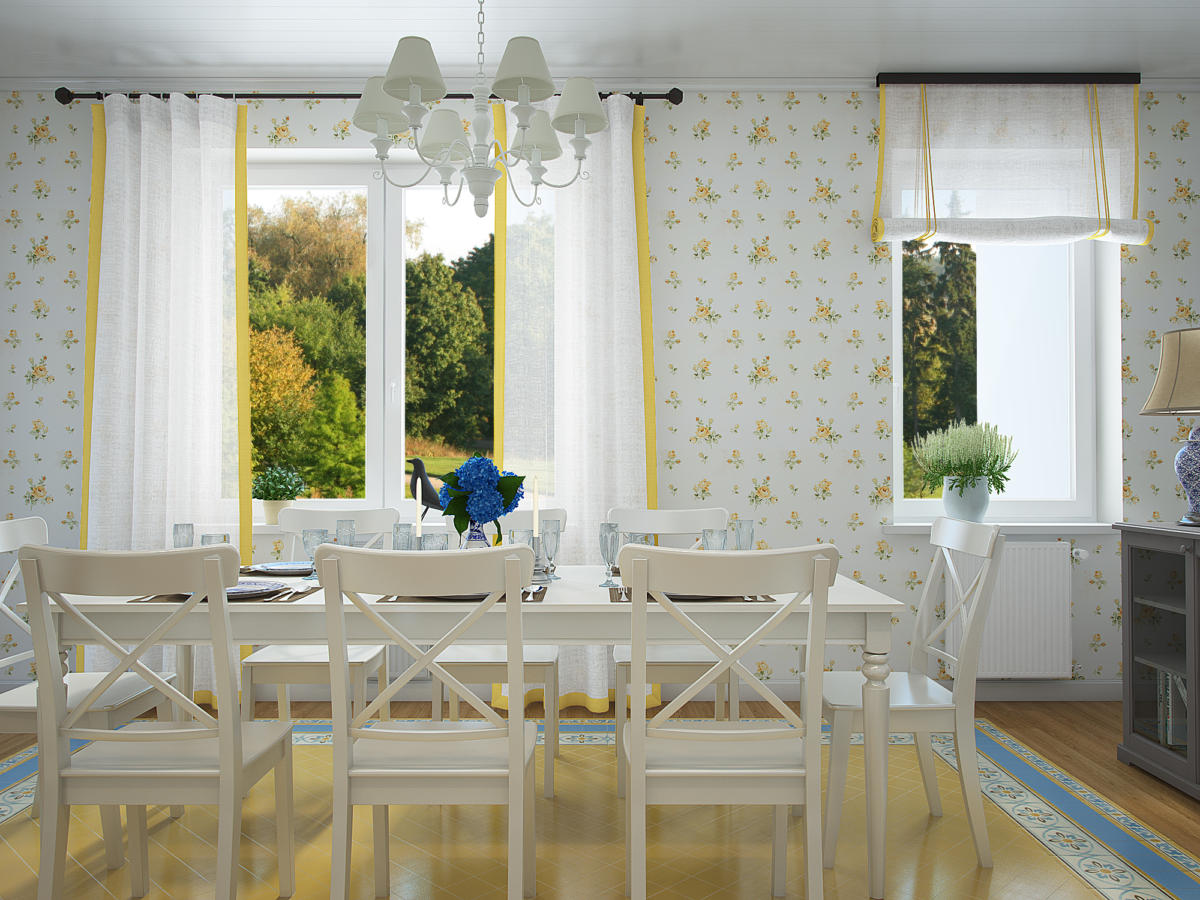 4.Compactness No source can compare with LED in this parameter. This is what made it possible to create such lighting devices that we begin to use in everyday life, for example, an LED strip. Sergey Sizy, lighting designer: - Compactness has given rise to a whole trend, which we observe as the integration of light into space and finishing materials. This trend first appeared in the 70s in Europe, when low-voltage halogen lamps came into use. With the introduction of LEDs, the second wave of use in interiors of various systems of built-in and hidden lighting began. Glowing fabrics are made, light is integrated into furniture, glass and walls - the dream of science fiction writers becomes a reality and even a trend. lidschool.org
4.Compactness No source can compare with LED in this parameter. This is what made it possible to create such lighting devices that we begin to use in everyday life, for example, an LED strip. Sergey Sizy, lighting designer: - Compactness has given rise to a whole trend, which we observe as the integration of light into space and finishing materials. This trend first appeared in the 70s in Europe, when low-voltage halogen lamps came into use. With the introduction of LEDs, the second wave of use in interiors of various systems of built-in and hidden lighting began. Glowing fabrics are made, light is integrated into furniture, glass and walls - the dream of science fiction writers becomes a reality and even a trend. lidschool.org 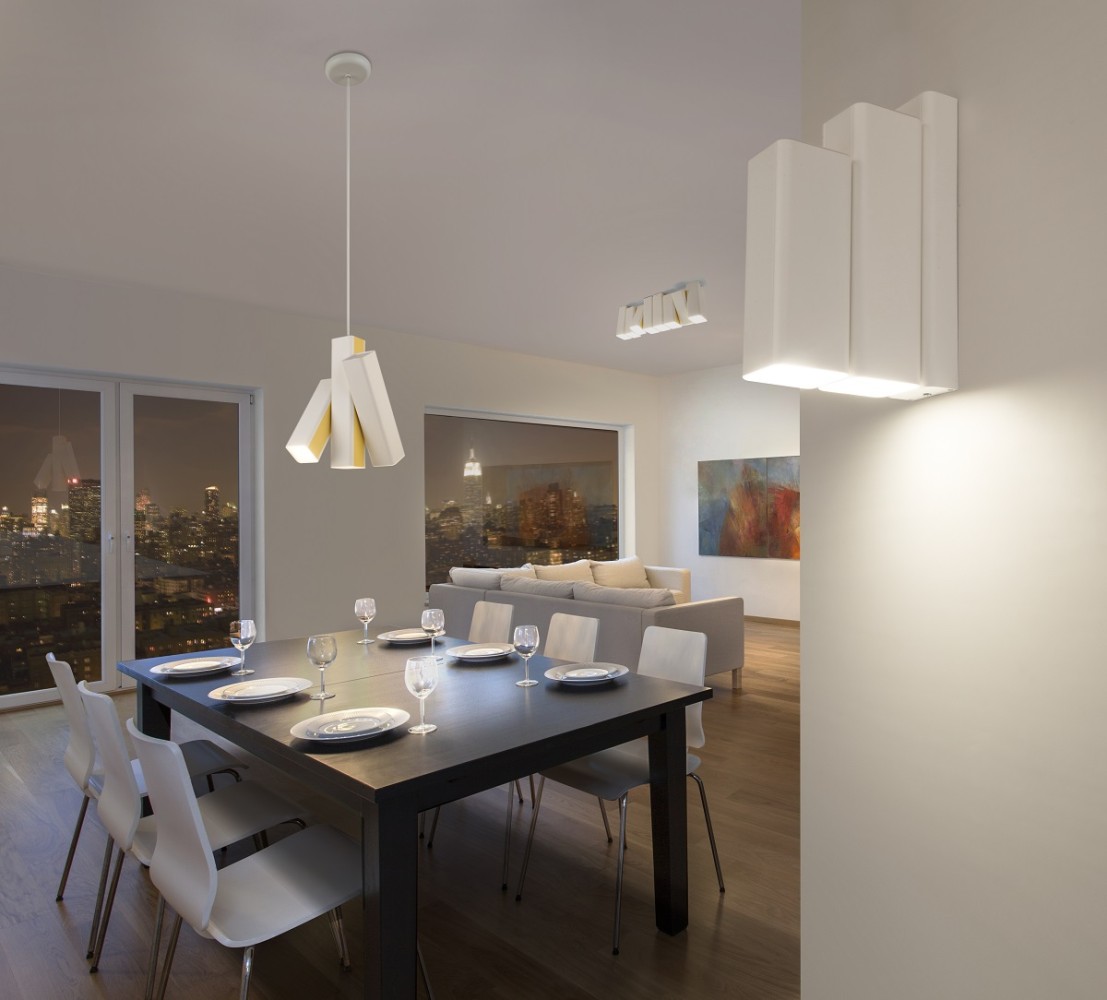 five.Ease of Control LEDs are digital light sources that can be easily linked to an intelligent control system. Moreover, this works both for home space and for the facades of huge buildings, the dynamic lighting of which can be changed using even a tablet. Natalia Neverskaya, Philips "Lighting solutions": - Another advantage of LED lamps is environmental friendliness, as they do not contain harmful substances, mercury vapor and lead, so they do not require special disposal. You can also note the absence of thermal, infrared and ultraviolet radiation, as well as high-quality light without flicker and glare. Today, the use of stretch ceilings is widespread, and therefore there is a need for luminaires with less heating. This task is also solved by recessed LED luminaires. Thanks to the advanced heat dissipation system, the LED lamps do not heat up.
five.Ease of Control LEDs are digital light sources that can be easily linked to an intelligent control system. Moreover, this works both for home space and for the facades of huge buildings, the dynamic lighting of which can be changed using even a tablet. Natalia Neverskaya, Philips "Lighting solutions": - Another advantage of LED lamps is environmental friendliness, as they do not contain harmful substances, mercury vapor and lead, so they do not require special disposal. You can also note the absence of thermal, infrared and ultraviolet radiation, as well as high-quality light without flicker and glare. Today, the use of stretch ceilings is widespread, and therefore there is a need for luminaires with less heating. This task is also solved by recessed LED luminaires. Thanks to the advanced heat dissipation system, the LED lamps do not heat up.  Lighting design project by Sergei Sizogo for the officeby TP Vision, the prize of the competition "Russian Lighting Design, 2013" Recent trends One of the trends in the field of home lighting can be called the emergence of filament LED lamps. These light sources, inside which instead of a tungsten filament is located LED "filament". In terms of their light effect, they resemble traditional incandescent lamps, which allows them to look harmoniously in chandeliers and other decorative lamps. Moreover, such light sources have all the advantages of LEDs. The shape of LED filament lamps familiar to the consumer makes it "easier" from a psychological point of view to switch to LED lighting. The classic design of the lamps makes them attractive not only when they are on, but also when the lights are off. Read also:.
Lighting design project by Sergei Sizogo for the officeby TP Vision, the prize of the competition "Russian Lighting Design, 2013" Recent trends One of the trends in the field of home lighting can be called the emergence of filament LED lamps. These light sources, inside which instead of a tungsten filament is located LED "filament". In terms of their light effect, they resemble traditional incandescent lamps, which allows them to look harmoniously in chandeliers and other decorative lamps. Moreover, such light sources have all the advantages of LEDs. The shape of LED filament lamps familiar to the consumer makes it "easier" from a psychological point of view to switch to LED lighting. The classic design of the lamps makes them attractive not only when they are on, but also when the lights are off. Read also:. 
5 proofs why LEDs are better - etk-fashion.com

